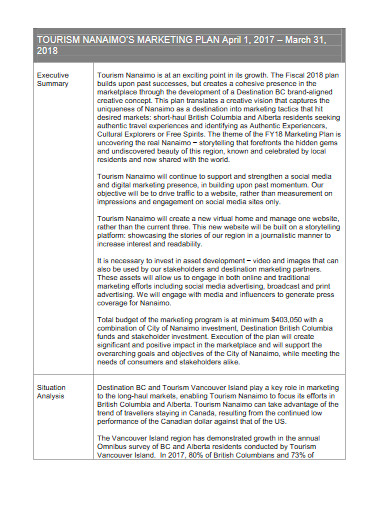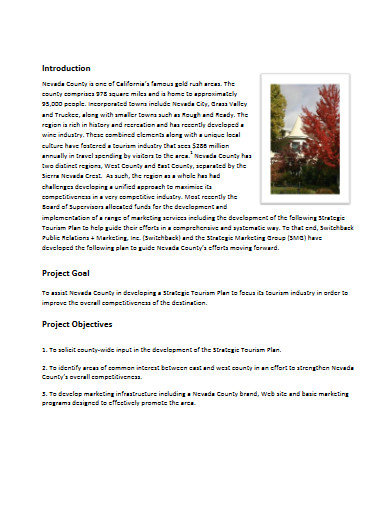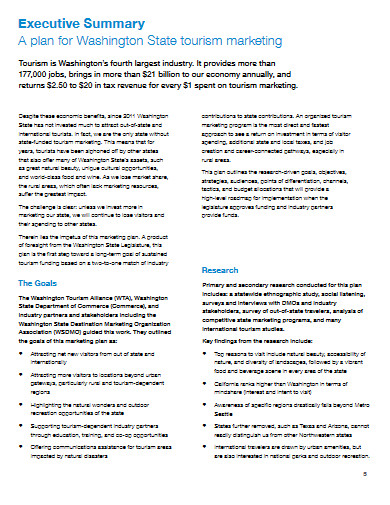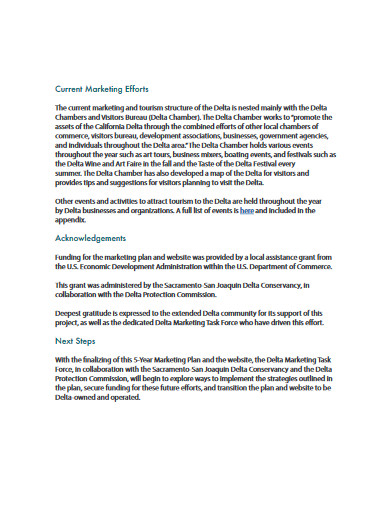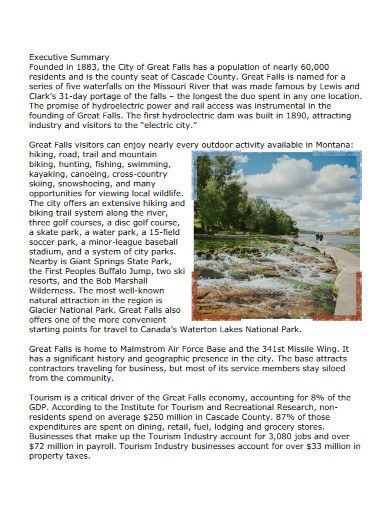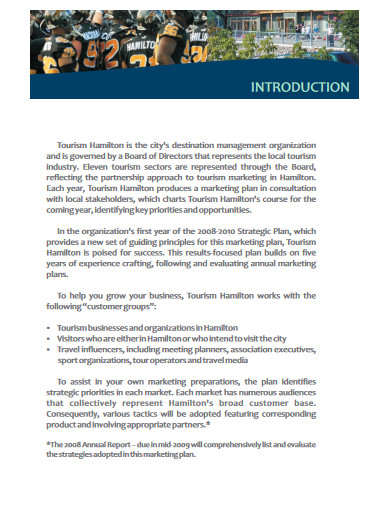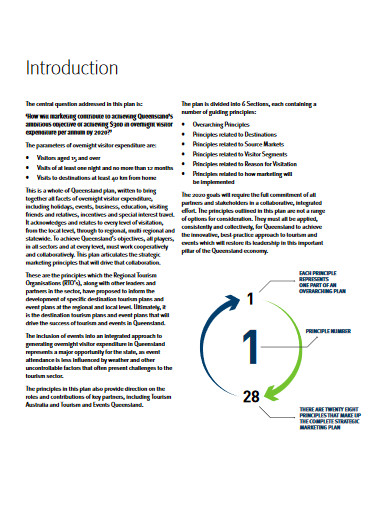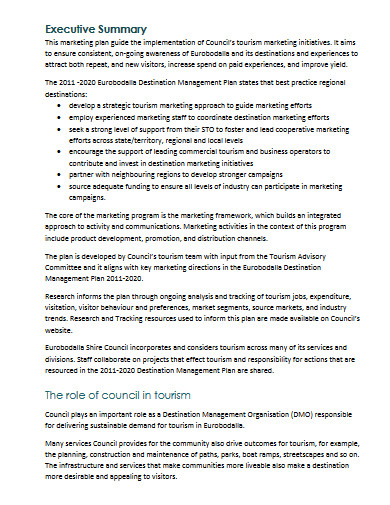10+ Tourism Marketing Plan Examples to Download
After the Cold War, the world became more involved in Tourism. The peace of the 21st Century has been the cause of this industry’s explosion. However, since this industry became more apparent in a country’s economy, many businesses sprout left and right to fill in the void. That’s why having a clear marketing plan whilst venturing into this industry is necessary. For that, we have 10+ Tourism Marketing Plan Examples that will surely help you scale up your marketing effort and deliver sizable marketing for your company. We also provided an excellent guide to help you create one. Check them down now.
10+ Tourism Marketing Plan Examples
1. Tourism Marketing Plan Template
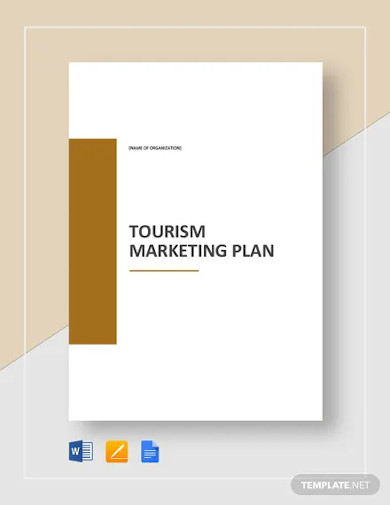
2. Travel Agency Marketing Plan Template
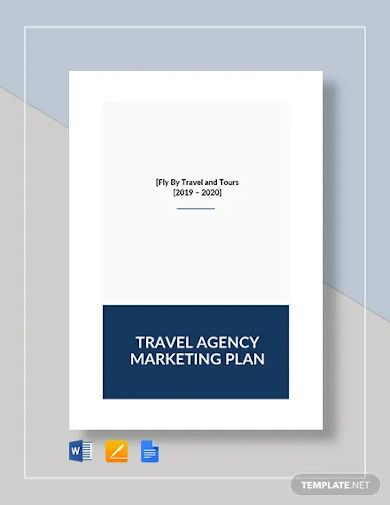
3. Tourism Marketing Plan Example
4. Sample Tourism Marketing Plan
5. Plan for Tourism Marketing
6. Tourism 5-Year Marketing Plan
7. Simple Tourism Marketing Plan
8. Tourism Marketing Plan in PDF
9. Tourism Development and Marketing Plan
10. Tourism Strategic Marketing Plan
11. Basic Tourism Marketing Plan
What is a Tourism Marketing Plan?
A Tourism Marketing Plan is a report document that people in the tourism industry uses to scale up or improve their marketing efforts. This document provides strategies and tactics to improve the current marketing efforts of the company. In this way, the company can catch up to the competition’s standards and take more customers.
What are the three types of tourism?
Nowadays, tourists are everywhere. Sometimes, they pop up into your favorite store, while at other times, you see them adorning a landmark you always forget to notice. Nonetheless, for people within the tourism industry, there are at least three basic types of tourism, and these are written below.
-
Domestic
Domestic Tourism involves people of the same country traveling within the country either for professional or personal reasons. Depending on the nation you are in, domestic tourism could be your main business facet.
-
Inbound
Inbound Tourism is a type of tourism that involves people from other country vising your country for professional or personal reasons. This type of tourism sometimes has a duration; that’s why it is quick most of the time. If the person decides to stay for work, then this will no longer be considered tourism.
-
Outbound
Outbound Tourism is the same as inbound but is only the opposite. This type of tourism involves someone from your country, visiting another country for personal or professional reasons.
How to Create a Tourism Marketing Plan
Marketing is one of the most important aspects of business, especially small businesses and social media, because these industries need advertising more, and both are flexible. However, the tourism business is also in need of this if you want your business to stand out. So to help you create one, these steps are provided below.
Step 1: Executive Summary
Executive Summaries is as icing is to the cake. They are there to invite people to read through the topic more. An executive summary is a concise version of the whole plan. It incorporates all of the parts of the marketing plan into a page or two, which shows everyone the rationale behind the whole endeavor and its subsequent produce.
Step 2: Goals
The next thing you need to do is to set business goals for the whole campaign. You should make sure that you have specific metrics or data on why you decided to create such an objective. Ambition is good, and being hopeful is excellent. However, when it comes to business, you needed to balance both heart and mind. That’s why it is necessary for your plans to be SMART (Specific, Measurable, Achievable, Realistic, and Time-bound). Things you need to note are your target market, your competition, and your metrics in knowing how you are faring compared to the main goal.
Step 3: Action Plans
Since you now have a general idea of what the market is like and what you want to do, you should now include an action plan to tell people how you can do it. This is necessary because, without action, any plans and strategy you have will only end up a corporate wish. So make sure you have a proper action plan.
Step 4: Communication Plan
Sometimes people end this whole planning with the action plans, and that’s why they fail. They have a detailed analysis of the key problems, an outline of the tactics, but because there’s no communication plan, the team would find it difficult to progress. Some say write an email, while others want to provide a full report, then other times people send two identical reports that only consumes time. That’s why the point here is that a communication plan is necessary, so you can go on your international travel and not get lost in what’s happening with the project.
FAQs
What are the seven elements of a marketing plan?
The seven elements of a marketing plan are:
1. Market Research
2. Target Market
3. Metrics
4. Budget
5. Positioning
6. Marketing Strategy
7. Competitive Analysis
What is tourism marketing?
Tourism Marketing is a method of business that creates a sense of cooperation between businesses in the industry. Depending on the level of their business, they may coordinate at the regional, national, and international levels of the business. The key idea of tourism marketing is to ensure that the tourist has the service they require in their travels.
Who is the father of tourism?
Thomas Cook is the father of tourism. He started his first traveling business in 1841 when he planned an excursion for 570 people to a rally in Loughborough. He even made the first holiday brochures.
Any sample or template can help you create a good presentation. However, if you want to venture into this industry, you need grit and a whole lot of it. Starting from scratch is never easy. Nonetheless, with an excellent idea and a detailed action plan, you’ll be like Thomas Cook, planning himself into stardom.



